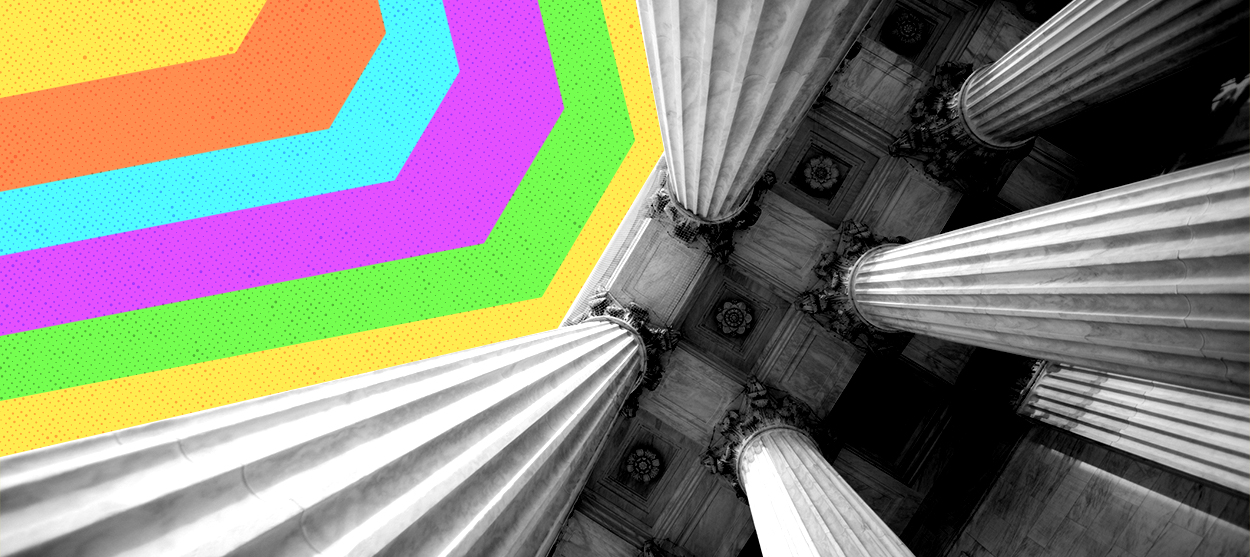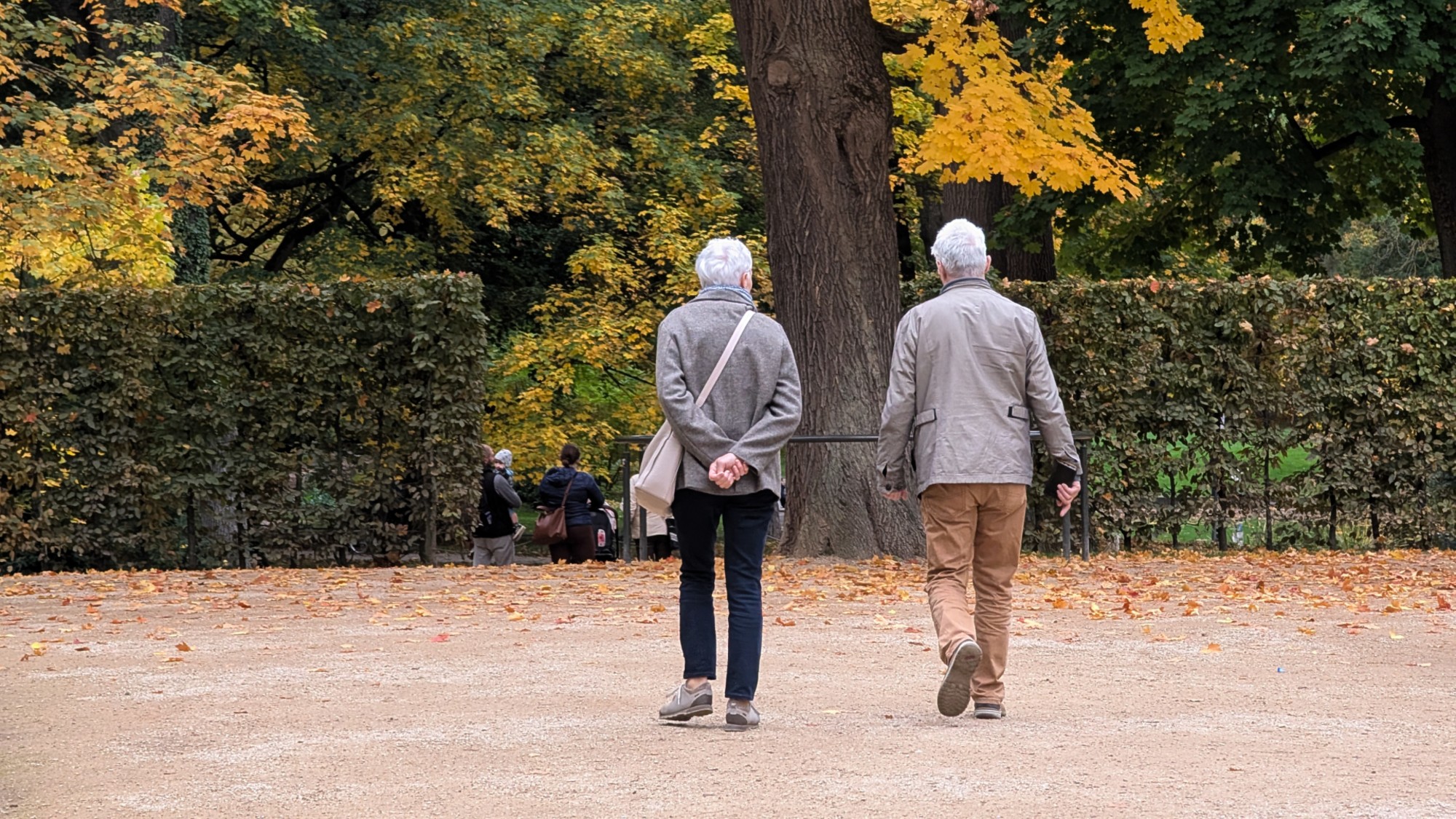Donald Trump has 1 good design idea
Classical government buildings really are more beautiful than brutalist ones


President Trump has bad taste, as anyone who's seen images of his personal penthouse in New York City well knows. Designed in the style of Louis XIV (the "L'état, c'est moi" king, of course), it's festooned in 24K gold and marble — extremely expensive but remarkably tacky. His real estate portfolio is dominated by towers whose only distinction is the extent of their branding. The beautiful places he owns, like the Washington hotel, his Turnberry resort in Scotland, and Mar-a-Lago, owe their grace to architects long dead.
But Trump has one good design idea: his plan, as revealed in a draft executive order obtained by Architectural Record, that "classical architectural style shall be the preferred and default style" in new and retrofitted federal buildings. Traditional regional styles, like Spanish colonial architecture in Florida, will be permitted as well, while discordant modern styles like brutalism and deconstructivism would be discouraged.
Out with bland yet overbearing monstrosities like the buildings that house the Departments of Education, Labor, and Health and Human Services. In with more ornamented, symmetrical styles, like that of the National Archives or the Cannon House Office Building. Out with bare concrete, and in with beauty.
The Week
Escape your echo chamber. Get the facts behind the news, plus analysis from multiple perspectives.

Sign up for The Week's Free Newsletters
From our morning news briefing to a weekly Good News Newsletter, get the best of The Week delivered directly to your inbox.
From our morning news briefing to a weekly Good News Newsletter, get the best of The Week delivered directly to your inbox.
I am far from a reflexive architecture anti-modernist. While I do tend to favor older, more vernacular styles, I like the Dwell look, too, and I'm unopposed to skyscrapers — provided they're more in the vein of the Chrysler Building than, say, Trump Tower.
Modern isn't bad, and big isn't (always) bad, but when the two are combined something often goes wrong. Perhaps nowhere is that truer than in architecture of the state, like those departmental buildings, where there is no market pressure toward even a modicum of attractiveness and normal human feeling. Too many federal buildings are heavy and oppressive, boring but disconcerting. Insofar as they are "honest," as advocates like to claim, the truth they are telling is that these departments are mechanistic bureaucracies which will confuse, surveil, and intimidate you.
Have you ever walked a block along one of these buildings? There is absolutely nothing of interest on their monotonous façades. You end up instinctively averting your eyes to study instead the peanut carts and t-shirt stands that dot the sidewalk, which at least show signs of life.
The worst room I've ever experienced was a U.S. Customs checkpoint. It was large and low-ceilinged, windowless, just a little bit too hot, festooned with security cameras and seething with human frustration. This was a room designed — whether intentionally or by unimaginative default I cannot say — to produce a feeling of powerlessness. By the time I reached the counter, I was willing to do or say just about anything if they would only let me out.
A free daily email with the biggest news stories of the day – and the best features from TheWeek.com
"The fact is contemporary architecture gives most regular humans the heebie-jeebies," Brianna Rennix and Nathan J. Robinson explain in their tour-de-force on the subject at Current Affairs. Asked to name their favorite pieces of American architecture, Americans' minds overwhelmingly turn to the prewar period. "And when it comes to architecture, as distinct from most other forms of art, it isn't enough to simply shrug and say that personal preferences differ," Rennix and Robinson argue. "[W]here public buildings are concerned, or public spaces which have an existing character and historic resonances for the people who live there, to impose an architect's eccentric will on the masses, and force them to spend their days in spaces they find ugly and unsettling, is actually oppressive and cruel."
We can't control what style private builders choose, but federal buildings should be beautiful if they can, and classical and regional architecture styles have a beauty brutalism lacks. The Trump administration has the right idea here — but there are two things which worry me about this executive order.
First is the possibility of negative politicization of the very architectural styles the order seeks to promote. The Current Affairs story, written from a staunchly left-wing perspective, bemoans the left's tendency to defend dreary, dehumanizing architecture against conservative calls for more humane, artisanal public structures. Trump's order, crassly titled "Making Federal Buildings Beautiful Again," could indelibly link classical and regional styles to our historically unpopular president.
Worse yet would be a perception that this stylistic shift is inspired by racism: Some white supremacists have taken up the cause of European architectural traditionalism — as if it isn't matched by incredible works like the Jameh Mosque of Isfahan, Bhutan's Tiger's Nest Monastery, or the monolithic churches of Ethiopia — and the Nazis developed a distinctly fascist neoclassicalism. Prioritizing regional styles like the Afro-Caribbean influences in historic New Orleans architecture or the Pueblo Revival style of the Southwest over generic classicism would help rebut any such associations.
Second, contemporary takes on older styles, if executed with inferior materials and craftsmanship, end up a worse visual insult than newer styles done well. (This is much of what's wrong with McMansions, for example.) Chintzy, sentimental pastiche — the Disneyfication of federal architecture — is a real risk.
Here again leaning into regional styles would be wiser than slapping Greek columns all over the country. In Los Angeles, get inspiration from local jewels like the Eastern Columbia Building or Castle Green. In Boston, take a cue from the brick of Fenway Park or the Massachusetts State House. In Miami, see Freedom Tower or any number of colorful, inviting art deco constructions. These are all buildings that suit and beautify their locations. Why can't federal buildings do the same?
Bonnie Kristian was a deputy editor and acting editor-in-chief of TheWeek.com. She is a columnist at Christianity Today and author of Untrustworthy: The Knowledge Crisis Breaking Our Brains, Polluting Our Politics, and Corrupting Christian Community (forthcoming 2022) and A Flexible Faith: Rethinking What It Means to Follow Jesus Today (2018). Her writing has also appeared at Time Magazine, CNN, USA Today, Newsweek, the Los Angeles Times, and The American Conservative, among other outlets.
-
 ‘Stakeknife’: MI5’s man inside the IRA
‘Stakeknife’: MI5’s man inside the IRAThe Explainer Freddie Scappaticci, implicated in 14 murders and 15 abductions during the Troubles, ‘probably cost more lives than he saved’, investigation claims
-
 The UK’s best Christmas pantos
The UK’s best Christmas pantosThe Week Recommends Dive into the festive cheer, even into the new year, with some traditional favourites and modern twists
-
 The longevity economy is booming as people live longer
The longevity economy is booming as people live longerThe Explainer The sector is projected to reach $27 trillion by 2030
-
 Has Zohran Mamdani shown the Democrats how to win again?
Has Zohran Mamdani shown the Democrats how to win again?Today’s Big Question New York City mayoral election touted as victory for left-wing populists but moderate centrist wins elsewhere present more complex path for Democratic Party
-
 Millions turn out for anti-Trump ‘No Kings’ rallies
Millions turn out for anti-Trump ‘No Kings’ ralliesSpeed Read An estimated 7 million people participated, 2 million more than at the first ‘No Kings’ protest in June
-
 Ghislaine Maxwell: angling for a Trump pardon
Ghislaine Maxwell: angling for a Trump pardonTalking Point Convicted sex trafficker's testimony could shed new light on president's links to Jeffrey Epstein
-
 The last words and final moments of 40 presidents
The last words and final moments of 40 presidentsThe Explainer Some are eloquent quotes worthy of the holders of the highest office in the nation, and others... aren't
-
 The JFK files: the truth at last?
The JFK files: the truth at last?In The Spotlight More than 64,000 previously classified documents relating the 1963 assassination of John F. Kennedy have been released by the Trump administration
-
 'Seriously, not literally': how should the world take Donald Trump?
'Seriously, not literally': how should the world take Donald Trump?Today's big question White House rhetoric and reality look likely to become increasingly blurred
-
 Will Trump's 'madman' strategy pay off?
Will Trump's 'madman' strategy pay off?Today's Big Question Incoming US president likes to seem unpredictable but, this time round, world leaders could be wise to his playbook
-
 Democrats vs. Republicans: who are US billionaires backing?
Democrats vs. Republicans: who are US billionaires backing?The Explainer Younger tech titans join 'boys' club throwing money and support' behind President Trump, while older plutocrats quietly rebuke new administration
